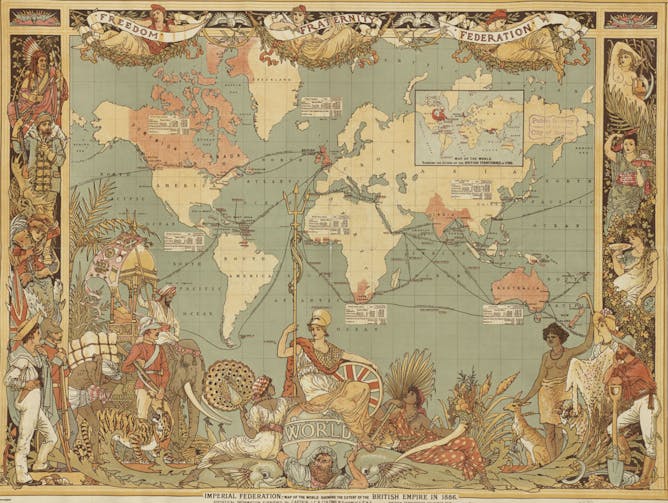|
In the first of a two-part series, Steve Schifferes from City St George’s, University of London, charts the rise and fall of globalisation, explaining how first Britain and then the US took on the role as the world’s economic top dog. He warns that for all globalisation’s faults, the world is a more unstable place when there is no such dominant power. And in part two, he offers a chilling view of what the world’s financial future could look like, now the American century of global dominance is drawing rapidly to a close.
Until the onset of industrialisation in the 17th and 18th centuries brought artificial light and factory shifts, the idea of getting your eight hours of sleep was unusual. Most people didn’t sleep through the night, instead going to bed with the Sun and waking during the night for a couple of hours of activity. Now, studies suggest this might be one way to deal with insomnia.
|

A world map showing the extent of the British Empire in 1886.
Norman B. Leventhal Map & Education Center, Boston Public Library/Wikimedia Commons
Steve Schifferes, City St George's, University of London
In each era of globalisation since the mid-17th century, a single country has sought to be the clear world leader – shaping the rules of the global economy for all.
|
|
|
-
Steve Schifferes, City St George's, University of London
With no single dominant power waiting to take over from the US, the impacts of the next financial crisis could have catastrophic impacts around the world.
|
|

Cindy McCreery, University of Sydney
Here’s how it works – and what it might mean for succession.
|
|
|
-
Kate Cantrell, University of Southern Queensland
Nobody’s Girl is Virginia Giuffre’s inside account of the two years she spent as a ‘sex slave’ working for Jeffrey Epstein and co-conspirator Ghislaine Maxwell.
-
Rebecca Hamer, Sheffield Hallam University
Survivors often feel let down by organisations whose duty it is to protect.
|
|

Ivis García, Texas A&M University
Disaster recovery is harder on isolated islands. The Jamaican diaspora living in the U.S., U.K., Canada and elsewhere will be invaluable in the recovery.
|

Chloe Ward, Queen Mary University of London; Åsa Harvard Maare, Malmö University; Catherine Spooner, Lancaster University; Daisy Dixon, Cardiff University; Frances Fowle, University of Edinburgh; Karl Bell, University of Portsmouth; Pippa Catterall, University of Westminster
From gruesome portraits to creepy critters, these are the paintings that have stayed with our experts long after their first glimpse.
|
|
|
-
Iain Boyd, University of Colorado Boulder
The Russian military claims to have flown its Burevestnik nuclear-powered cruise missile 8,700 miles over 15 hours.
-
Alan Whitfield, National Research Foundation; Charles Helm, Nelson Mandela University; Francis Thackeray, University of the Witwatersrand; Renee Rust, Nelson Mandela University; Willo Stear, Nelson Mandela University
A coastal migration up and out of Africa was more likely to succeed than an overland journey.
-
C. Michael White, University of Connecticut
This recall affects America’s most prescribed drug. It’s the latest in a series of concerning manufacturing issues that have come to light over the past few years.
|
|